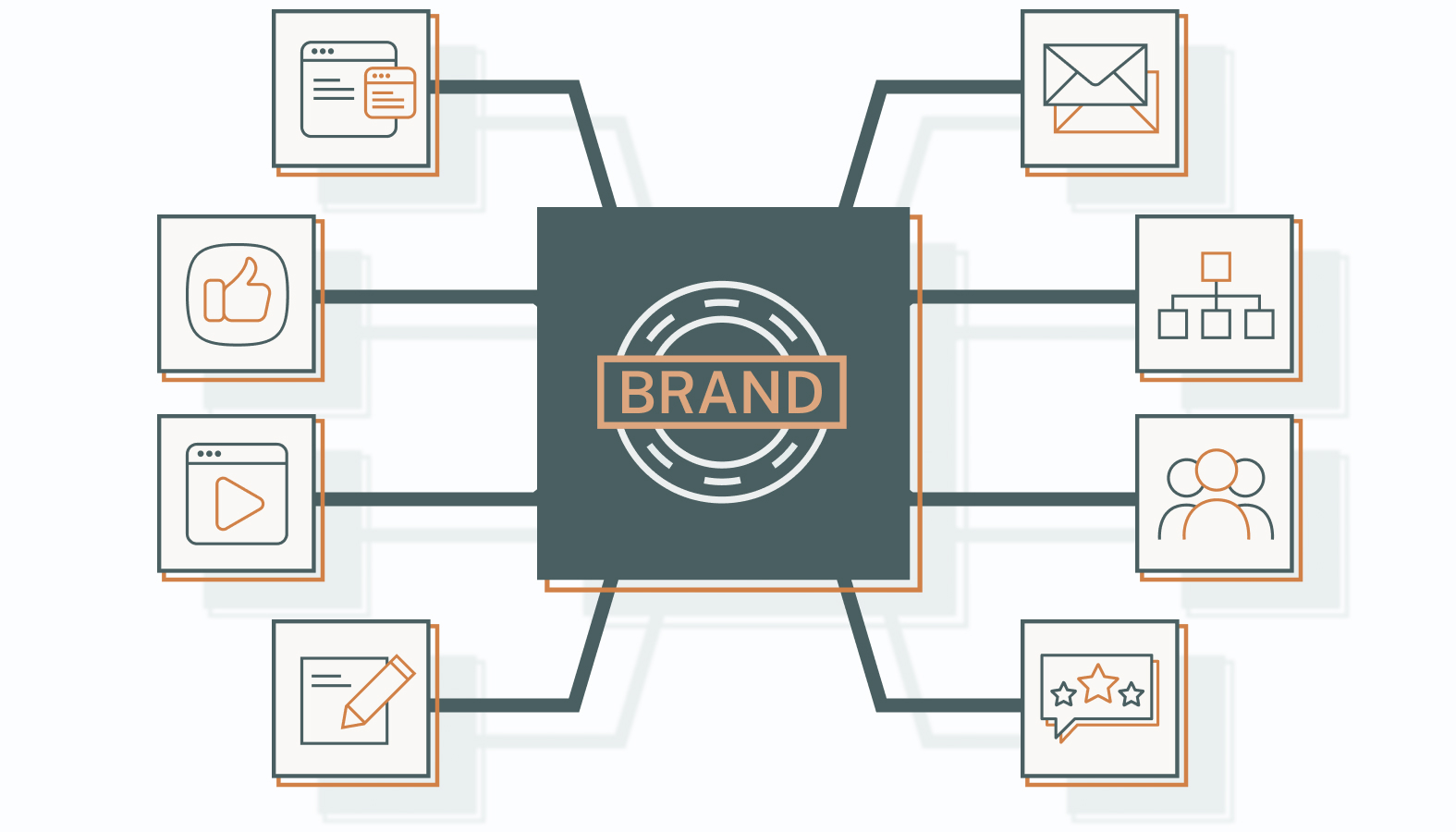In the search for top-tier talent, recruitment marketing has become a game-changer in the modern hiring landscape.
Recruitment marketing is a strategic way to get and attract talent before they even apply for a job. It’s like traditional marketing, but the target audience is potential employees rather than customers.
With the intense competition for top applicants, a company must market itself effectively to secure the top talent. Unlike traditional recruiting, which starts only when there are open positions, recruitment marketing continuously builds a desirable employer brand to win over future job applicants.
Learn more about this strategy in this article.
The Change in Talent Acquisition: Why Recruitment Marketing?
The recruitment process has changed dramatically with digital technologies. Old methods like job postings on bulletin boards and newspaper classified ads are no longer enough to attract top talent.
Today’s candidates, particularly the highly sought-after millennials and Gen Zs, are well-connected and often begin their job search long before they send out applications. They’re not just looking for a job; they’re looking for an experience, a culture, and career growth.
Recruitment marketing meets this demand by presenting a company as a place of opportunity and growth. It uses tools such as SEO, content marketing, social media, employer review sites, and job boards to create an appealing narrative that speaks to what candidates are seeking.
Recruitment marketing addresses the current challenges in hiring, such as high competition for talent, the need for cultural fit, and candidates’ desire for transparent communication, by making a company’s value proposition clear and visible where job searchers are already looking.
In essence, recruitment marketing helps your company stand out as an employer of choice in a competitive job market. It’s a critical strategy that not only draws in the best candidates but also keeps them engaged and excited about working with you.
Crafting a Magnetic Employer Brand
Your employer brand is the heart of your recruitment marketing. It’s how potential employees see your company’s culture, values, and mission.
Employer branding promotes your company as the best place to work for the candidates you want to recruit and retain. A strong employer branding strategy uses storytelling across various platforms to engage job seekers. It highlights your company’s environment, success stories, challenges, and growth opportunities.
This narrative doesn’t just tell but shows why your company is a great place to work.
Company Careers Page
The careers page is often candidates’ first look at your company, and first impressions matter. It should clearly and attractively show your company’s culture and values.
Best practices for this platform include using real photos of your team, detailing employee development programs, and sharing testimonials that reflect your core values. Ensuring the page is user-friendly and authentic can also turn casual visitors into passionate aspirants.
Social Media
Social media platforms are the modern-day storytelling campfires. Each platform, such as LinkedIn and Instagram, offers a chance to tell different parts of your employer brand story to various audiences.
Sharing authentic stories about daily work life, employee achievements, and behind-the-scenes peeks helps potential candidates relate to your company. It can build a community around your employer brand, making it feel alive and dynamic.
Video Platforms
Video content powerfully showcases your company culture and employee experiences. With platforms like YouTube and Vimeo, you can give a transparent view of your organization. Office tours, employee interviews, and event highlights create an emotional connection that words alone can’t achieve.
Company Blogs and Articles
A company blog deepens your brand narrative. Here, you can share long-form stories about your mission, introduce your team members, and explore the nuances of your workplace environment.
Blogs provide substance and insight, helping candidates understand ”why” your company is special. Through storytelling, your brand can resonate more deeply with prospective candidates.
Email Newsletters
Email newsletters maintain both passive and active candidates engaged. They update potential applicants on company news, job openings, and events, nurturing a relationship over time.
Storytelling techniques in e-bulletin could include employee spotlights, success stories, and personal messages from leadership that align with your employer brand. Make these emails engaging, informative, and reflective of your company’s personality.
Professional Networks
For B2B and knowledge-industry roles, professional networks like LinkedIn are gold mines for employer branding. They’re channels where you can flaunt your company’s achievements, share thought leadership content, and highlight your team’s expertise.
Engagement on these sites can boost your employer brand by aligning your organizational values with the professional goals of your desired candidates.
Employee Advocacy Programs
Employees are your most credible ambassadors. An employee advocacy program empowers your team members to share their genuine experiences and contribute to the employer brand. By fostering pride in sharing the company story, you amplify your employer brand with authentic voices.
Review Sites
Finally, company reviews on platforms like Indeed and Glassdoor significantly impact your employer brand. It’s essential to actively manage and respond to all reviews.
Using positive feedback in your brand storytelling adds credibility, while addressing criticisms can show your commitment to improvement and transparency.
Attracting Top Talent With a Strong Online Presence
A strong online presence can be the difference between engaging good talent and attracting the top talent. It ensures that when top-notch candidates search for opportunities, your company not only shows up but also stands out as a place where they can thrive.
Website Optimization: Careers Page and Beyond
A well-optimized careers page is essential. It serves as a digital handshake to potential candidates.
Here’s how to make the right impression:
- Clarity and Accessibility: Clearly structured job listings with easy navigation and a simple, intuitive design are key. Make it easy for candidates to find what they need without unnecessary clicks or confusion.
- Search Engine Optimization (SEO) Best Practices: Use relevant keywords throughout your careers page to improve its visibility in search engines. Optimize job descriptions, blog posts, and company information sections with terms potential candidates will likely search for.
- Mobile Responsiveness: With an increasing number of job seekers using mobile devices, your careers page must look great on all screen sizes for a seamless experience.
- Fast Load Times: A slow website can discourage impatient visitors. Ensure your site is optimized for speed to keep potential applicants engaged.
- Engaging Content: Use multimedia content like videos, images, and infographics to bring your company culture and employment experience to life.
Mastering Social Media Recruitment
Different social media platforms have unique strengths that cater to various job roles.
- LinkedIn: Ideal for professional roles, leadership positions, and industry-specific talent
- Twitter: Great for reaching out to thought leaders and influencers in your industry
- Facebook: Offers broad reach and can be effective for both professional and non-professional roles
- Instagram: Perfect for showcasing company culture and appealing to younger, creative industries
Tactics for engagement and brand promotion include:
- Content Diversity: Share a mix of job postings, behind-the-scenes looks, employee testimonials, and industry-related content to keep your audience engaged.
- Community Interaction: Create a sense of community by actively responding to comments and messages and participating in relevant conversations.
- Consistent Branding: Ensure your social media profiles consistently reflect your employer brand across all platforms.
Capitalizing on Paid Advertising for Targeted Outreach
Paid advertising on platforms like Facebook and YouTube can significantly improve your reach and target the most suitable candidates:
- Facebook Ads: Use Facebook’s granular targeting options to reach specific demographics, locations, or interests. Create custom audiences from website visitors or email lists for retargeting, ensuring your ads reach those interested in your company.
- YouTube Ads: Video ads on YouTube can convey your company culture and available job opportunities to a wide audience. You can target viewers based on their search history to reach those with aligned interests and skills.
Creating a Candidate-Centric Application Process
In recruiting the best, the application process can be the ultimate differentiator. A candidate-centric approach to applications aligns the interests of the candidate with the needs of the organization.
First Impressions Matter
First impressions in recruitment are like the opening chapter of a book; they can captivate immediately or lead to a quick exit.
A candidate’s initial interaction with your application process sets the tone for their entire experience. It includes a simple application form, the tone of the job description, and the ease of navigation on the careers page.
A positive first impression builds respect and interest, encouraging the candidate to pursue the opportunity with enthusiasm.
Candidate Expectations
Setting clear expectations from the outset builds trust and manages candidates’ anticipation.
Transparent communication about the timeline, required documents, and selection stages assures candidates that the process is organized and their time is valued. This transparency enhances satisfaction and reflects the company’s commitment to open communication.
Reflects Company Culture
The application process reflects the company’s culture and values. Aligning the candidate experience with the company’s culture reinforces the brand and ensures a good fit. A positive application experience that mirrors the company’s values can engage target candidates who are more likely to be engaged and committed in the long run.
Candidate Experience and Engagement
A holistic candidate-centric approach covers the entire recruitment journey, not just the application form. It includes timely updates, feedback opportunities, and active engagement. Encouraging candidate feedback shows respect and provides valuable understanding to improve the recruitment experience.
Data-Driven Recruitment: Metrics and Analytics
With metrics and analytics, HR practices become more informed and strategically aligned with both immediate hiring needs and long-term goals. Analyzing every aspect of recruitment offers insights that can improve how companies attract, hire, and retain talent.
Improved Decision Making
The use of recruitment metrics and analytics improves decision-making by identifying what works. Analyzing data on candidate sources, engagement rates, and time-to-hire helps recruiters make evidence-based decisions that align with the strategic goals of the organization, such as workforce diversity or market expansion.
Enhanced Efficiency
Data-driven practices make recruitment more efficient. Analytics identify bottlenecks and highlight faster pathways, speeding up hiring and onboarding. This approach quickly fills vacancies and reduces the downtime of unfilled roles.
Better Quality of Hire
“Quality of hire” measures the value a new employee brings to the organization. Data analytics helps predict candidate success by analyzing past performance and skill alignment. This enhances long-term performance and retention, ensuring a higher return on recruitment investments.
Cost Savings
Data-driven recruitment saves costs through better targeting and resource allocation. Analytics measure return on investment (ROI) for different recruitment strategies, helping organizations invest in the most cost-effective practices. Fine-tuning the hiring process with data saves time and resources.
Candidate Experience
A positive candidate experience is crucial for successful recruitment. Data helps shape this experience by analyzing metrics on application processes and candidate feedback. This creates a more efficient and personalized journey for each applicant, ensuring efficiency without losing the human touch.
Predictive Analytics
Predictive analytics enables proactive recruitment planning by forecasting future talent needs based on trends and business growth. This approach positions companies to address staffing needs before they become urgent, ensuring a steady pipeline of qualified candidates.
Competitive Advantage
Data-driven recruitment offers a competitive advantage in the search for talent. Companies using analytics can identify the best talent sources, optimize recruitment campaigns, and secure high-caliber candidates more effectively. This strategic edge is invaluable for organizational success.
Crafting Your Recruitment Marketing Strategy: A Step-by-Step Guide
Developing a recruitment marketing strategy starts with a clear vision and detailed planning and execution.
Here’s a step-by-step guide that breaks down the process to create a comprehensive approach to attract and secure the talent your organization needs to thrive.
Step 1: Planning and Research
Effective recruitment marketing begins with alignment with organizational goals, market trends, and the talent landscape.
Research the needs of the organization, the specifics of the roles to be filled, and the unique value propositions that differentiate the company in the market. Study competitor strategies and benchmark against them to position your company distinctively. Align the recruitment marketing strategy with broader organizational goals to support strategic direction and growth.
Step 2: Branding and Content Development
At the heart of recruitment marketing is the employer brand. It engage the right talents by resonating with their career goals and values.
Use storytelling, employee testimonials, and engaging content to showcase your company as a great place to work. Develop text, visuals, and media that create a compelling image of your company. Effective branding captivates and engages potential candidates, prompting them to envision a future with your organization.
Step 3: Execution and Engagement
With a strategic foundation in place, the execution phase brings the recruitment marketing strategy to life. This phase requires a clear timeline and collaboration between HR, marketing, department leads, and external partners.
Actively engage candidates through personalized communication, interactive content, and timely responses. Engagement should be continuous, keeping your company top-of-mind for candidates throughout their job search.
Step 4: Evaluation and Optimization
Measuring the impact of a recruitment marketing strategy ensures success isn’t left to chance. Use key performance indicators (KPIs) such as the number of qualified applicants, time-to-fill, cost-per-hire, and candidate satisfaction.
Use data-driven knowledge to continually refine and improve the strategy. This iterative process ensures the strategy remains effective in a changing talent market.
Taking the Next Step in Your Recruitment Marketing Journey
Crafting and executing a comprehensive recruitment marketing strategy is key to winning over and retaining top-tier talent. By using data, creating a candidate-centric application process, and building a strong digital presence, you set your company up for success in the competitive job market.
However, we understand that implementing these strategies can be challenging. If you need personalized advice or simply want to discuss your recruitment marketing needs, we’re here to help.
Schedule a candid conversation with one of our experts, and let’s explore how we can support your recruitment goals. No pressure, just an open and honest discussion to help you navigate recruitment marketing effectively.
We’re excited to hear from you and share our insights.










